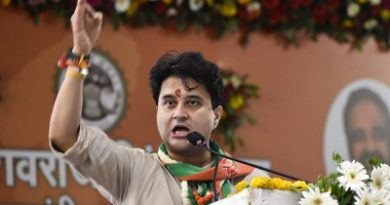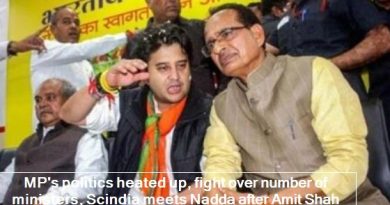JNU: A fierce desire for freedom and democratic dissent against authority (opinion)
fierce love of freedom and democratic dissent are the sine qua non of Jawaharlal Nehru University (JNU), study and struggle its motto. But why is JNU prone to dissent? What explains the fact that slogans popularised by former JNU students’ union president Kanhaiya Kumarbhukhmari se aazaadi, samantwad se aazaadi (Freedom from starvation, freedom from feudalism)are also the songs of JNU students struggling against the violence unleashed on January 5 on the campus by masked goons?
JNU has been a crucible of democratic dissent from its very genesis. Created by an Act of Parliament in 1969 (and established as a tribute to the first Prime Minister of India, Jawaharlal Nehru), JNU was created the year after the 1968 student-led protests rocked France, the USA and the rest of Europe, while left-wing student protests erupted in West Bengal and other eastern Indian states. These events left a deep impact on the university’s psyche. Post dinner late-night lectures in the dining halls and passionate debates became as regular a feature as formal classes during the day.
A fierce desire for freedom and democratic dissent against authority became the cherished values of the institution. Although divided between leftist unionsincluding the Students’ Federation of India (SFI), the All India Students Federation (AISF) and the Free Thinkers (a loose coalition of liberals and conservatives)passionate disagreements between students never erupted into violence. They sought creative outlets instead, such as poster wars and innovative sloganeering. Though the media regularly criticised JNU as being a white elephant’, its academic rigour and the resulting comparisons with top-notch left-wing institutes such as Berkeley in California and Sussex in the UK led to this leafy, sprawling campus at the edge of the Aravalli hills remaining largely untouched. The authorities never clamped down on this centre of dissent until the Emergency in 1975, and later, in 1983. Ironically, both incidents took place under Indira Gandhi, who had created and named the university after her father.
The National Emergency was the first major political challenge for this centre of academic dissent. To fight intellectual suppression by the authorities, in 1975, student organisations formed an underground group called Resistance’, which regularly issued bulletins against the government and colluding university authorities. As a result, on July 8 that year, at 5 am, 60 radical members of the students’ council were arrested. Later, police began hunting for iconic student leader Devi Prasad Tripathy (DPT, who passed away on January 2, 2020), who had gone into hidingprofessor C.P. Bhambri of the Centre for Political Studies had asked two university students to hide him. While searching for him, the police, led by police chief P.S. Bhinder, instead arrested an MPhil freshman, Prabir Purkasthya, under the Maintenance of Internal Security Act and kept him in jail for almost a year despite his innocence.
According to Rakesh Batabyal’s JNU: The Making of a University: Lt Governor Kishan Chand was told about it, and a witness later told the Shah Commission that though the authorities knew that they had picked up the wrong person, and were told so, nobody dared to release him, as the instruction’ had come from the PM’s office. As part of the fallout, DPT never got admission into JNU’s PhD programme, while Anand Kumar, a popular socialist student leader, had to travel to Chicago for his PhD.
The 1970s and 1980s were a period of global intellectual ferment, with creative innovations in poetry and literature, music, culture, theatre and cinema. This deeply influenced JNU students and facultyfilm directors like Vittorio De Sica, Andrzej Witold Wajda and Zoltan Fabri were iconic figures among them. The theatre at the Centre for Russian Studies, between the old and new campuses of JNU, was a regular hangout for students. The open-air theatres on campus (one next to Parthasarathy rocks and another behind Ganga dhaba) regularly staged plays by pioneering theatre directors such as Habib Tanvir and Badal Sircar. After the plays, students would passionately discuss the influence of German theatre director Bertold Brecht on Tanvir and Sircar late into the night over umpteen cups of tea, masala omelettes and bread pakodas.
The second political challenge came in 1983. The conflict between the students and the faculty and administration was over a new admission policy. The tension erupted when a faculty member abused a student, allegedly along caste lines. The JNU SC/ST Welfare Association filed a case against the teacher. The students’ union supported the Association, but the teachers wanted to negotiate provided the students would retract their demands. Later a second conflict between another student and a teacher, both belonging to minority communities, added fuel to fire. When some angry students pelted stones at prominent faculty members’ houses, popular historian Bipan Chandra famously told a group of agitating students, learn from Gandhi, who withdrew the struggle after the violence at Chauri Chara. Led by the socialists and Free Thinkers, the student agitation, according to Batabyal, gave in to pressures of competitive politics from the Left and gheraoed the Vice-chancellor inside his house, laying siege to it for days. The administration was forced to declare sine die at the university and invited the police to enter the campus. Hundreds of students were arrested, several student leaders rusticated, and for a year, there were no fresh admissions to JNU. A year later, when the university reopened, there were several fundamental changes brought about in the hostel rules and in admission policies.
In the past four years, JNU students have again returned to radical dissent, pressured by a hostile administration and a muscular Hindutva government which perceives protesters as anti-national’. First, under the leadership of former JNU students’ union president Kanhaiya Kumar, the university became a symbol of dissent against the hyper-nationalism of the BJP. Now, for a second time, agitationswhich began over fee hikes from mid-October 2019have again turned into a political protest against the NDA government. This recently grew all the fiercer as a result of the police’s ineptitude and mishandling of their duties when, on January 5, masked and armed goons entered the campus and began assaulting students and faculty members, leading to over 30 people being injured.
Four factors separate the past agitations from those currently taking place. First, the unleashing of large-scale violence by outsiders, mainly linked to right-wing fundamentalist groups, despite peaceful demonstration by students; second, the total boycott of classes for over two and a half months by the agitating students; third, an antagonistic ideological divide between right-wing Hindutva forces and the left-wing secular student movement that has led to several cases of unprovoked brutal lathi-charges on the students at the behest of the administration; and fourth, greater media coverage, since JNU is an elite institution and is also a crucible of dissent.
JNU must resolve this crisis while there is still a window for negotiations. The authorities must withdraw all cases against students, compromise on the fee hike by imposing higher fees on future students and recognise the fairly elected students’ union. For their part, the students must withdraw their boycott of classes. And to restore JNU to its academic glory, the leadership at the top must changeperhaps through the appointment of a visionary Vice-chancellor like the first, G. Parthasarathy, who was loved by the students.



